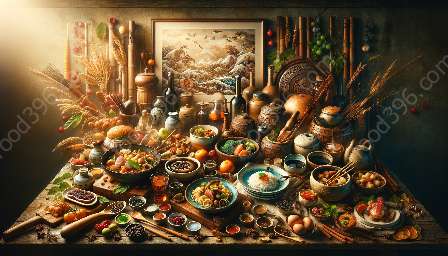Cuisine in the Renaissance was a time of significant change and innovation in the culinary world. It marked the beginning of the fusion of different culinary traditions, ingredients, and techniques that laid the foundation for what we now know as fusion cuisine.
The Renaissance Culinary Landscape
The Renaissance, a period of great cultural and artistic resurgence in Europe, also saw a revolution in the way people approached food and cooking. It was a time when new trade routes opened up, leading to the exchange of exotic ingredients and cooking methods between different cultures.
This cross-cultural exchange sparked a culinary revolution, as cooks and chefs began to experiment with new ingredients and techniques, blending the flavors and cooking styles of different regions to create innovative dishes that were a fusion of various culinary traditions.
Blend of Culinary Traditions
One of the hallmarks of fusion cuisine in the Renaissance was the blending of culinary traditions from different parts of the world. The increased trade and exploration during this period brought European explorers into contact with new and exotic ingredients from Asia, the Americas, and Africa. These new ingredients were eagerly incorporated into traditional European cooking, leading to the creation of entirely new dishes that combined flavors and techniques from different cultures.
For example, the introduction of exotic spices such as pepper, cinnamon, and nutmeg from Asia and the Middle East revolutionized European cooking, adding depth and complexity to traditional dishes. Similarly, the discovery of new fruits and vegetables from the Americas, including tomatoes, potatoes, and corn, completely transformed the European culinary landscape.
The Birth of Fusion Cooking
As ingredients from different parts of the world made their way into European kitchens, cooks and chefs began to experiment with combining these new flavors and techniques with traditional European cooking. This led to the birth of fusion cooking, where ingredients and cooking methods from different culinary traditions were merged to create entirely new and innovative dishes.
The fusion of different culinary traditions during the Renaissance laid the groundwork for the diverse and vibrant fusion cuisine that we enjoy today. It set the stage for a culinary movement that celebrates the blending of cultures and flavors, creating a rich tapestry of dishes that reflect the diversity of the world's culinary traditions.
The Legacy of Fusion Cuisine in the Renaissance
The fusion cuisine that emerged during the Renaissance not only had a profound impact on the culinary world of its time, but it also laid the foundation for the development of modern global cuisine. The spirit of experimentation and innovation that characterized Renaissance cooking continues to inspire chefs and cooks around the world, leading to the creation of new and exciting fusion dishes that blend the best of different culinary traditions.
From the fusion of Asian and European flavors to the blending of African and Middle Eastern ingredients, the legacy of fusion cuisine in the Renaissance lives on in the diverse and dynamic culinary landscape that we experience today.
In conclusion
The fusion cuisine that emerged during the Renaissance was a testament to the power of cultural exchange and culinary innovation. It transformed the way people approached food and cooking, laying the foundation for the diverse and vibrant fusion cuisine that we enjoy today. The blending of different culinary traditions, ingredients, and techniques during the Renaissance continues to inspire chefs and cooks around the world, leading to the creation of new and exciting fusion dishes that celebrate the rich tapestry of the world's culinary traditions.

